Last time, we compared the test results of six wireless network APs based on TR-398 Issue 2 Corrigendum 1. This time, we’ll continue to analyze and compare the test data of each AP in the aspect of “coverage”.
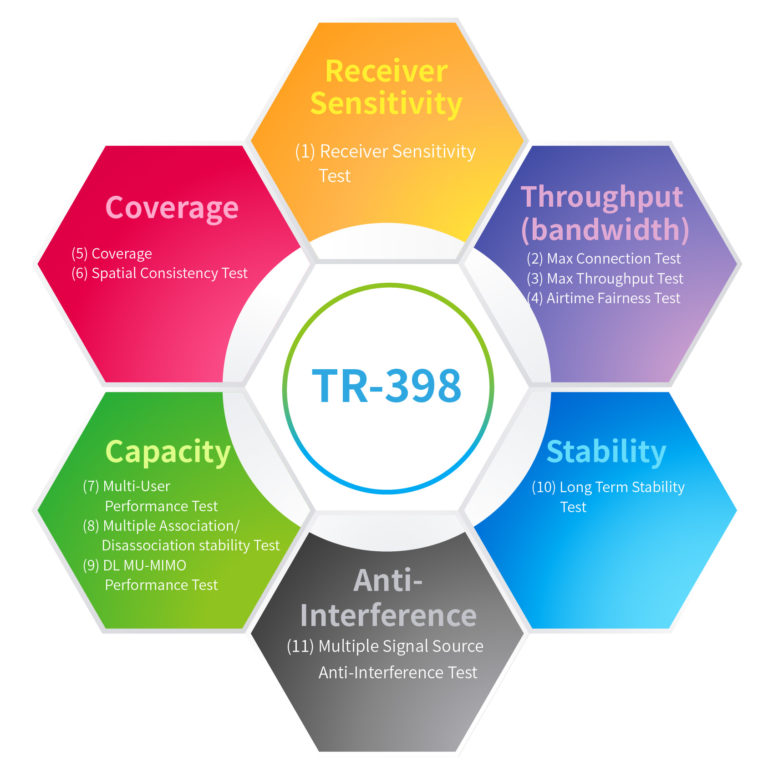
Figure 1: The six main aspects of TR-398
6.3.1 – Range Versus Rate Test
This test mainly simulates the transmission capabilities of wireless APs at different distances.
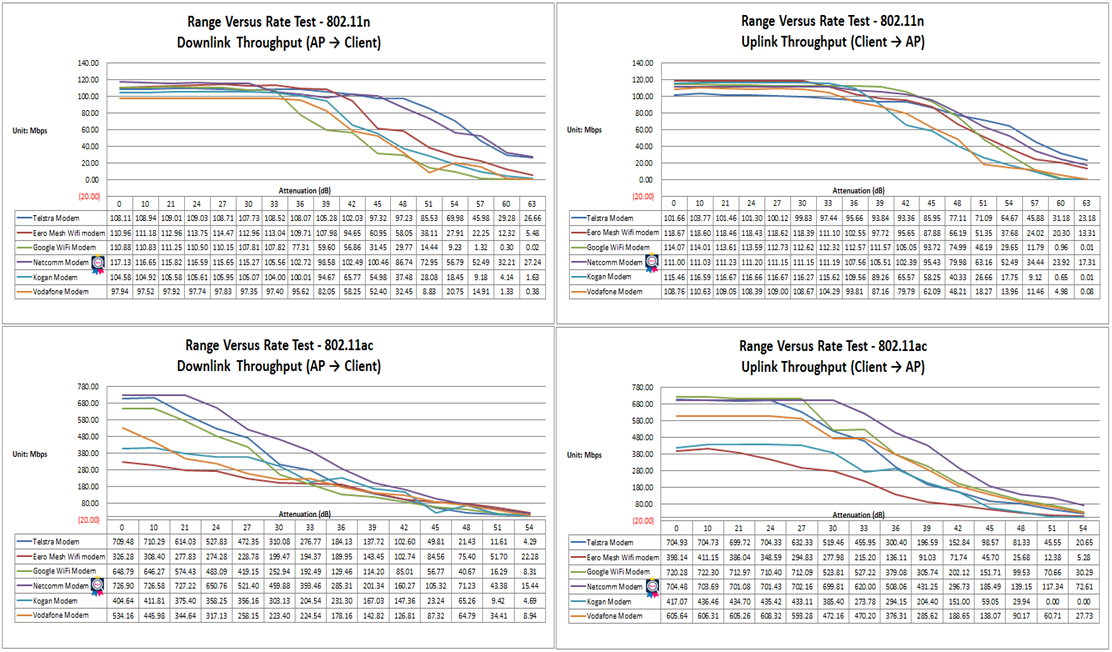
Figure 2: 6.3.1 – 802.11N/ 802.11AC Test Results
Comparing the test results of 802.11n and 802.11ac, only the two wireless APs of Telstra and Netcomm were able to pass the required specifications. The performance of the Netcomm wireless AP was also the best, maintaining a certain level of performance. From the results, we can see that when the distance is slightly longer, the transmission capabilities of other wireless APs begin to plateau, only the Google Wi-Fi modem was affected and started to decline. When the user moves away from the AP while streaming media, it causes the image quality of the content to degrade.
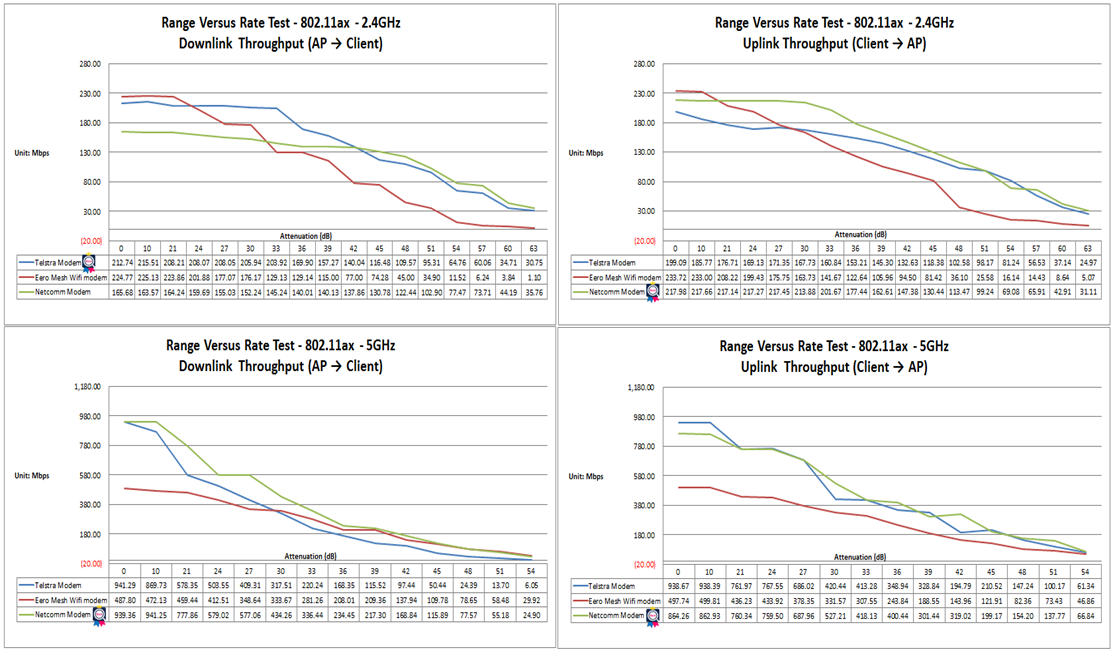
Figure 3: 6.3.1 – 802.11ax Test Results
Regarding 802.11ax-2.4GHz, Telstra’s wireless AP had the highest performance, and under 5GHz, the Netcomm wireless AP had the highest performance. Although the performance of the Eero wireless AP at 2.4GHz was about 10% better than the others in the beginning, its transmission performance also declines sharply afterward, and at the beginning, it was even lower than the others by 50% at 5GHz.
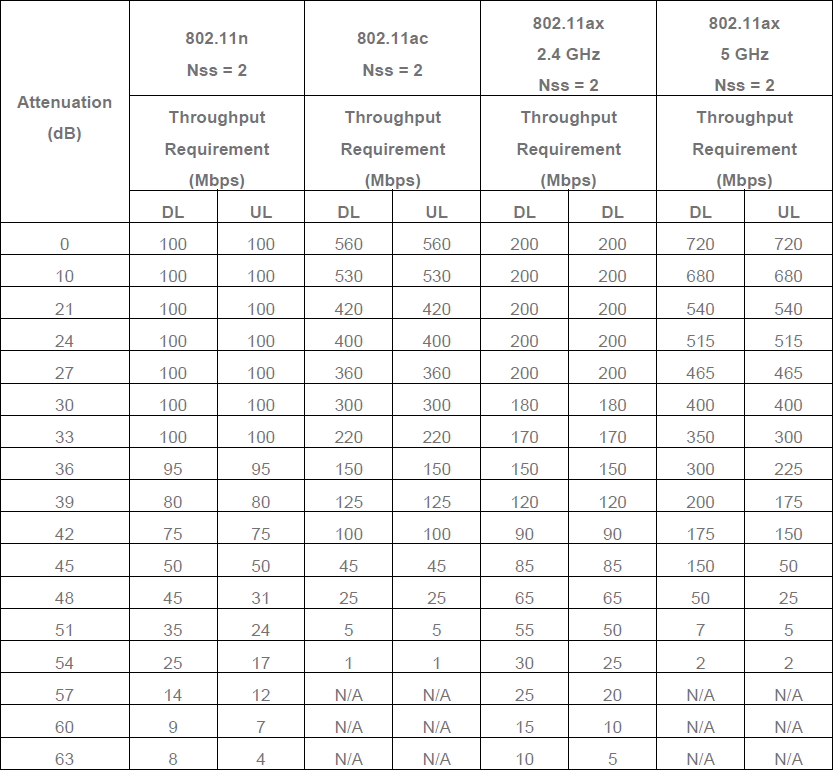
Figure 4: Testing Standard 6.3.1
6.3.2 – Spatial Consistency Test
This test is to confirm the transmission capability of the AP at various angles under different signal strengths.
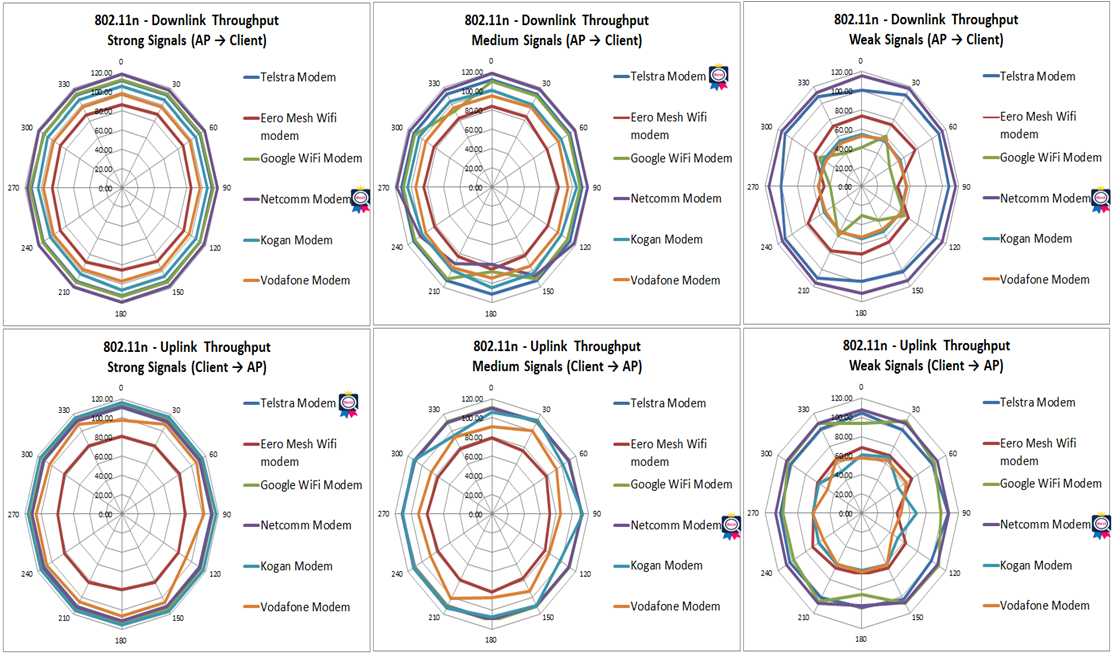
Figure 5: 6.3.2 – 802.11n Test Results
We can see from the test results of 802.11n that the performance of the Netcomm wireless AP did the best. The Eero and Google wireless APs did not meet the test standards due to their low transmission capacity and also the difference between the transmission performance of the angles was too large. Under the strong and medium signals, all of the wireless APs have no obvious dead signal spots. However, when the signal attenuation weakens, we can see that the Google, Eero, and Vodafone wireless APs have weak transmission performance at different angles.
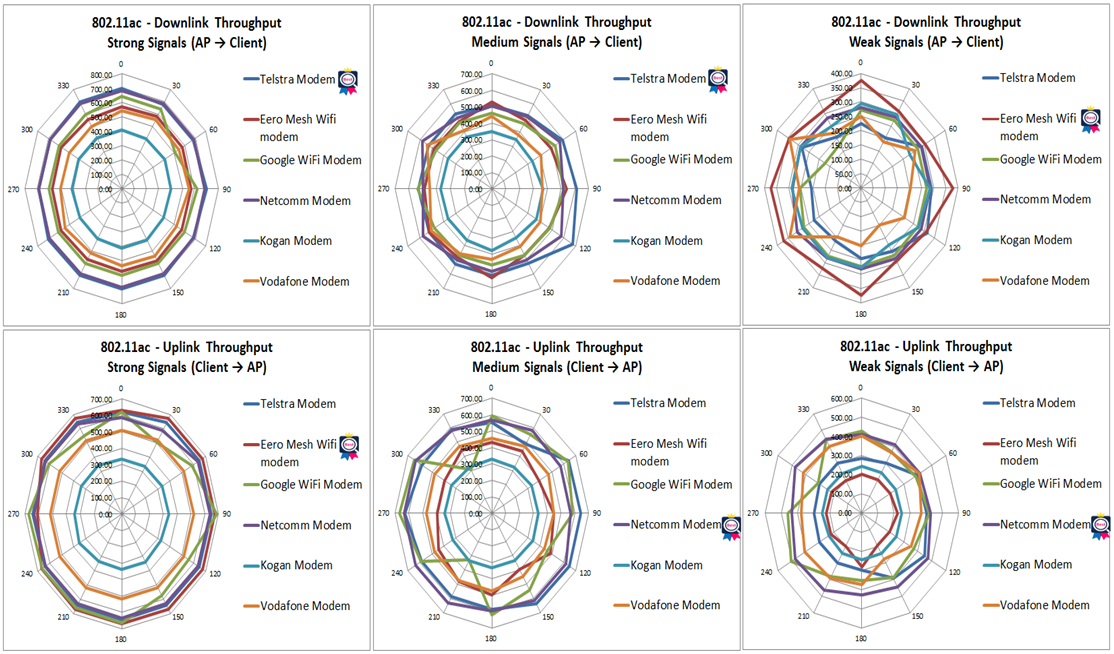
Figure 6: 6.3.2 – 802.11ac Test Results
In 802.11ac, these six wireless APs all failed the test standard. When there is a medium signal, the transmission performance of the Google wireless AP is significantly reduced at 210° and 330°. When the signal is weak, the Google wireless AP still has a significant drop at 330°.
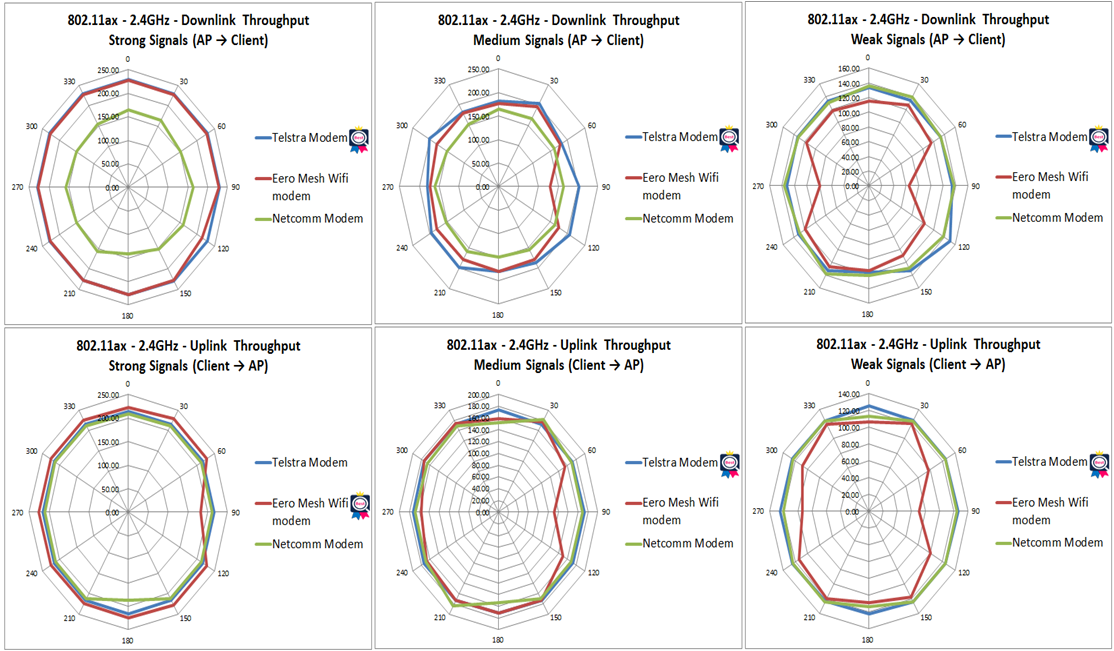
Figure 7: 6.3.2 – 802.11ax – 2.4GHz Test Results
In test 802.11ax – 2.4GHz, the Telstra and Eero wireless APs passed the test specifications. As for the Netcomm wireless AP, the transmission performance was about 50Mbps, which is lower than the two other APs in the downlink transmission test. Although the Eero wireless AP passed the specifications, the transmission performance dropped significantly at 90° and 270°.
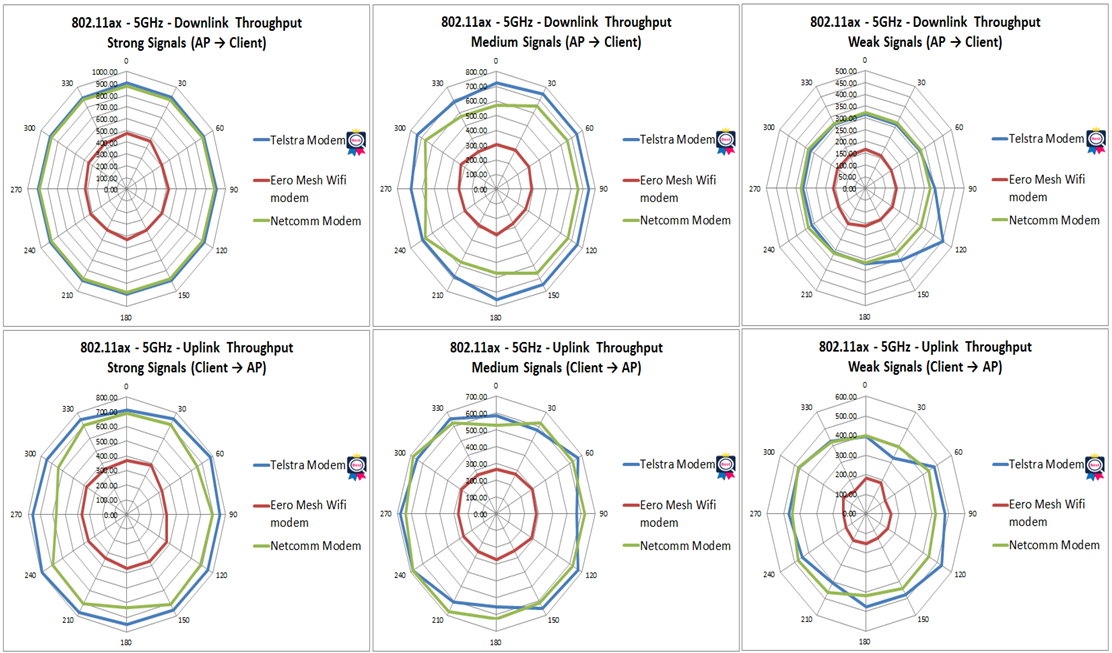
Figure 8: 6.3.2 – 802.11ax – 5GHz Test Results
Here, both Telstra and Netcomm wireless APs passed the requirements. The performance of the Eero wireless AP for 5Ghz was about 50% lower than that of the other two, which was the main reason why it failed this test.
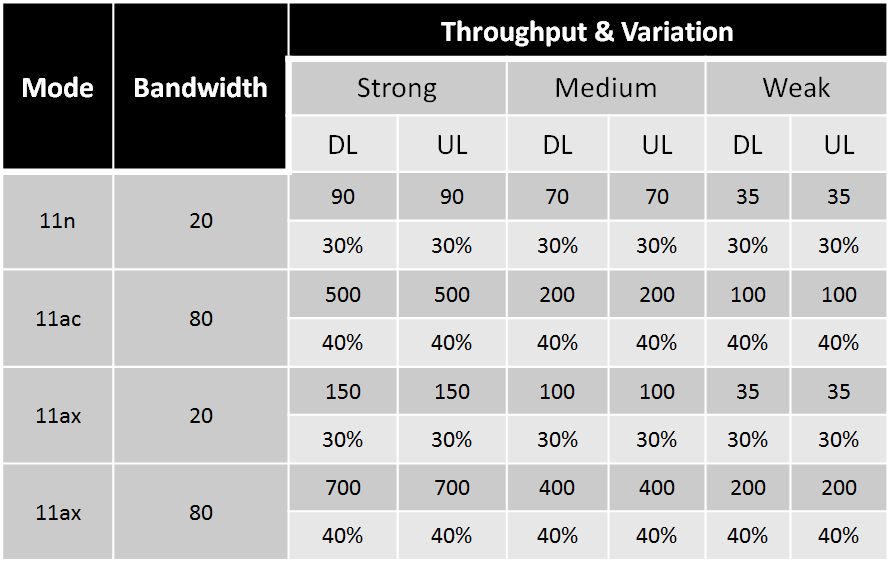
Table 1: Testing Standard 6.3.2
6.2.2 – Maximum Throughput Test
This test mainly confirms the transmission capability of the wireless AP.
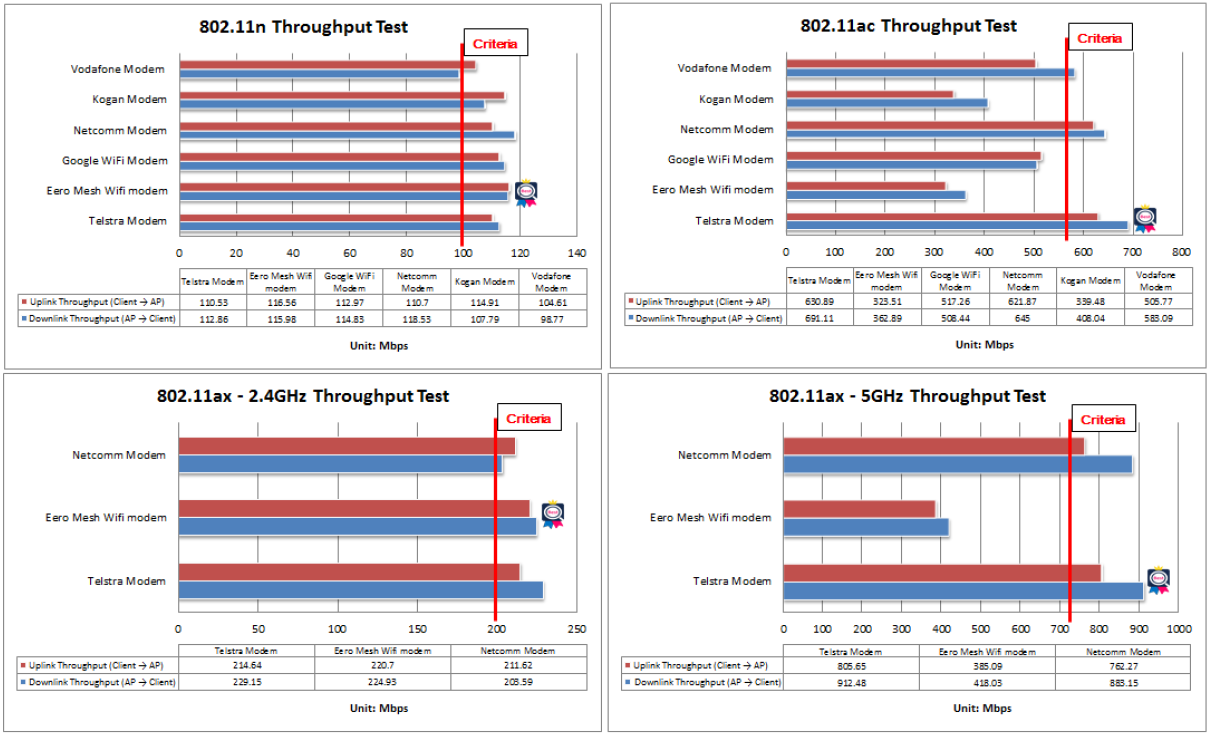
Figure 9: 6.2.2 Test Results
During this test, only Telstra and Netcomm wireless APs met the standard. Under 2.4GHz, Eero had the highest performance, and under 5GHz, Telstra had the highest performance. Although not all of them could meet the test standards, based on the test data, this kind of transmission capability is in line with the ordinary scenarios for most users, for example watching YouTube, Netflix, or mobile gaming.

Table 2: Testing Standard 6.2.2
6.3.3 – 802.11ax Peak Performance Test
This test confirms the highest transmission performance in the 802.11ax mode.

Figure 10: 6.3.3 Test Results
Under 2.4GHz, all three passed the test, and Eero performed the best among them. Under 5GHz, only Telstra wireless AP supports 160MHz bandwidth, so only the Telstra wireless AP was tested on 5GHz, which also passed the standard. On another note, since the wireless APs only support 1Gbps, all test standards exceeding 1Gbps are adjusted to 935 Mbps (please refer to test standard note 2).

Table 3: Testing Standard 6.3.3
In this article, we compared the results of the coverage tests. In the following articles, we will conduct comparative analyses of the remaining aspects.
Take the Next Step
Allion has many years of testing experience. Not only do we provide customized testing services with user scenarios, but we also provide customers with professional market evaluations and competitive product analysis reports for improving user experience. Assisting helping our clients to improve their brand reputation and helping them seize market opportunities is our main goal.
For more information on our service, please feel free to email us at service@allion.com.






































